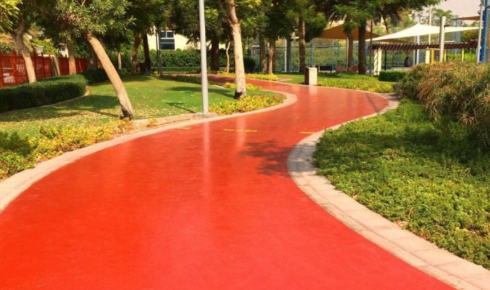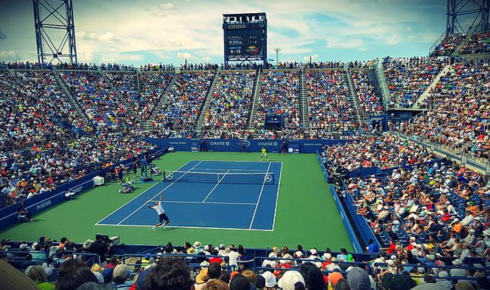In today’s fast-paced world, more people are turning to walking as an accessible, low-impact form of exercise. Whether it’s in residential complexes, parks, schools, or fitness centers, dedicated walking tracks are gaining popularity. However, building a functional and long-lasting walking track requires more than just planning a path—it starts with choosing the right walking track flooring material.
In this guide, we explore the different types of walking surfaces, their advantages, construction considerations, and how to maintain and repair walking tracks for longevity and safety.
Why Walking Surfaces Matter: Safety, Performance, and Comfort
When it comes to fitness infrastructure, walking track surfaces often receive less attention than gym flooring or sports courts. However, the quality of these surfaces plays a crucial role in both safety and user satisfaction. A poorly constructed track can lead to tripping hazards, joint strain, or early surface degradation.
High-quality walking surfaces offer:
- Shock absorption: Reducing impact on knees and ankles during prolonged use.
- Anti-slip features: Essential for early morning dew or rainy conditions.
- UV resistance: Preventing the material from fading or becoming brittle under harsh sunlight.
- Consistent texture: Ensuring smooth, even strides for users of all ages.
These benefits are especially important in community parks and wellness zones, where both the elderly and children use the facilities daily.
Popular Walking Track Flooring Materials in India
The choice of walking track flooring material directly affects the durability, aesthetics, and usability of the track. Let’s take a closer look at the most commonly used materials across different types of walking tracks.
1. Synthetic Acrylic Surfaces
Acrylic-based systems are one of the most favored walking track materials in India. Known for their durability and weather resistance, acrylic surfaces are layered to provide grip, cushioning, and flexibility.
- Advantages: UV-stable, customizable in color, water-resistant, quick drying.
- Ideal for: Outdoor parks, sports arenas with walking loops, school campuses.
Acrylic surfaces are especially recommended for locations with high footfall, as they offer consistent performance for years with minimal maintenance.
2. Rubberized Flooring
Rubber surfaces are designed to offer excellent shock absorption, making them ideal for users who may be recovering from injuries or who are at higher risk of falls.
- Advantages: Cushioning, slip resistance, noise reduction.
- Ideal for: Fitness zones, senior citizen centers, hospitals, indoor walking tracks.
These walking track floors also reduce fatigue, making them perfect for longer walks or rehabilitation activities. However, they may require more upkeep when used outdoors due to sensitivity to UV rays.
3. Interlocking Sports Tiles
Interlocking tile systems, usually made of PVC or polypropylene, are modular and easy to install. They allow for quick repairs and offer good grip and comfort.
- Advantages: Modular installation, easy repair, wide color options.
- Ideal for: Indoor tracks, multi-purpose halls, temporary walking zones.
These tiles are water-resistant and come with drainage features that make them suitable for both dry and damp environments.
Choosing the Right Walking Track Surface: Key Considerations
Not all walking track surfaces are the same. The “best” choice often depends on:
- Usage type: Is the track intended for daily walkers, athletes, or senior citizens?
- Location: Outdoor or indoor?
- Weather: High-rainfall or high-UV regions may require specific surface properties.
- Maintenance capabilities: How often can the track be cleaned or repaired?
- Budget: High-end materials offer better performance, but at a higher upfront cost.
For most urban municipalities and housing societies, synthetic acrylic surfaces strike the right balance between cost, performance, and durability. They are easy to clean, resist algae growth, and provide good aesthetics with color customization.
Working with Trusted Walking Track Builders
The success of any walking track project is also highly dependent on the quality of installation. Hiring experienced walking track builders ensures that the surface is laid over a properly leveled sub-base with correct drainage slope and edging.
Professional builders also provide:
- Soil testing and grading for stability.
- Layering plans to ensure optimal cushioning and grip.
- Material sourcing that meets international standards.
- Warranty and after-sales support, including periodic resurfacing.
With a reliable contractor, you also get a partner who understands the nuances of local climate and user demographics, helping you choose the best-fit walking track materials.
Walking Track Repair: Extend Life and Performance
Even the most durable walking track floors will need occasional maintenance or repairs. Exposure to sun, rain, foot traffic, and plant debris can wear down the surface over time.
Common issues that require walking track repair include:
- Cracks or surface peeling: Often due to poor drainage or sub-base issues.
- Faded colors or markings: A result of prolonged UV exposure.
- Slippery surfaces: Due to moss or dirt buildup, especially in shaded or damp areas.
Timely repair not only saves cost but also keeps the track safe and appealing. Most repairs involve surface recoating, patching worn areas, or replacing broken tile modules. For synthetic surfaces, reapplication of the top coat and remarking can restore its original condition quickly.
To keep your track in top shape:
- Sweep the track weekly to remove debris.
- Wash it monthly with water and mild detergent.
- Conduct visual inspections for surface damage every 6 months.
- Schedule resurfacing every 3–5 years based on usage.
Final Thoughts
Walking is one of the simplest, healthiest activities—but the quality of the walking track surface can determine how enjoyable and safe it is. From synthetic acrylic walking track to rubberized floors and modular tiles, there are multiple walking track flooring materials to choose from, depending on your needs and environment.
Collaborating with expert walking track builders not only ensures proper execution but also guides you in making the best material and maintenance decisions. And remember—timely walking track repair can add years to your track’s life while keeping users safe.
If you’re planning a new walking track or want to renovate an existing one, prioritize the surface—because a great walking experience always starts from the ground up.




